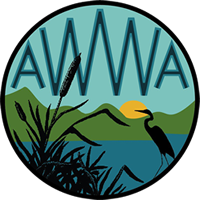Wetlands come in all sorts of shapes and sizes. “Wetland” is a broad term that indicates an area with hydric soils (wet long enough to develop an oxygen depleted layer) and the ability to sustain aquatic plants.
 A classic Maine wetland, a slow flowing river, hydric soils, aquaitc plants, and surrounded by forests.
A classic Maine wetland, a slow flowing river, hydric soils, aquaitc plants, and surrounded by forests.
Wetlands located on main lands (ie not near the ocean) can be classified as swamps, marshes, bogs, and fens based on the hydrology and vegetation. A brief classification of each type of wetland is as follows:
Swamp – a wetland that is forested
Marsh – a wetland that is dominated by herbaceous rather than woody plant species
Bog – a wetland that accumulates peat, a deposit of dead plant material
Fen – a wetland that is fed by mineral-rich surface or groundwater
While there are several different types of wetlands, they are all extremely important ecological systems. Primarily, wetlands serve to filter water, removing excess nutrients and sediments. They also help buffer regions during flooding and to stabilize shorelines.
 The image above illustrates the important functions of wetlands, including the dissipation of incoming stream energy (important during high flow times), breaking down contaminants, and filtering sediments and excess nutrients.
The image above illustrates the important functions of wetlands, including the dissipation of incoming stream energy (important during high flow times), breaking down contaminants, and filtering sediments and excess nutrients.
Wetlands are also considered to be one of the most biologically diverse ecosystems. Many species of plants and animals live in wetlands.
